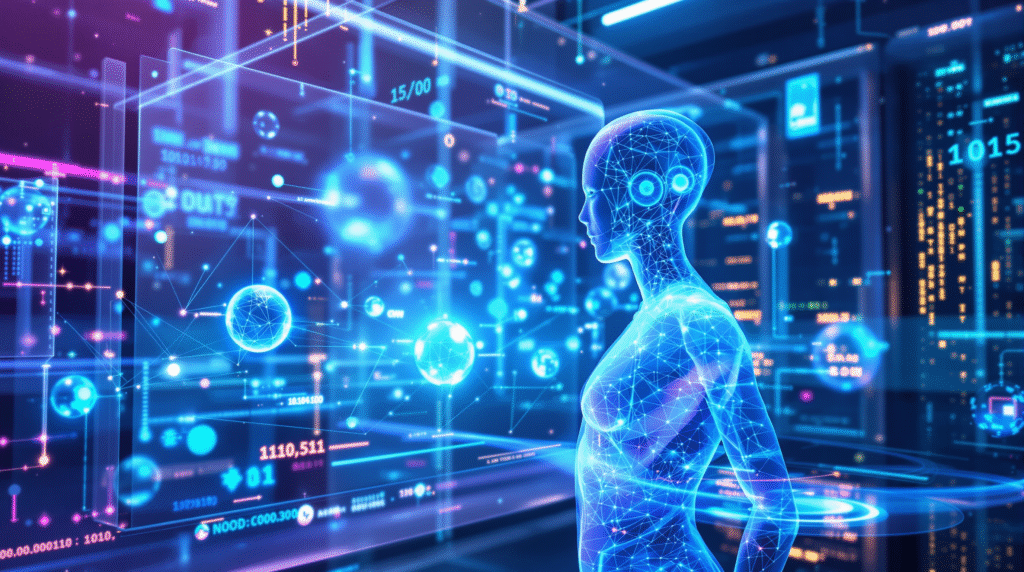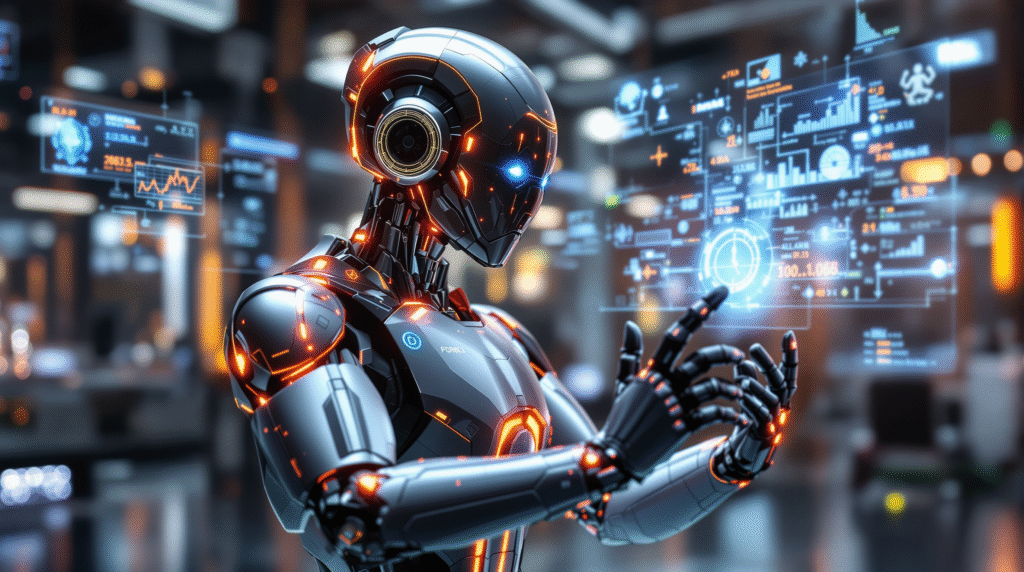Introduction: The Convergence of Quantum Computing and AI
The worlds of quantum computing and artificial intelligence (AI) are two of the most exciting frontiers in modern technology. Each field, on its own, promises to revolutionize the way we solve problems, process information, and build intelligent systems. But when these two domains intersect—when AI agents are empowered by quantum computing, and quantum algorithms are guided by intelligent agents—we open the door to entirely new horizons in computing.
Quantum Computing: A New Paradigm
Quantum computing leverages the principles of quantum mechanics to process information in fundamentally different ways than classical computers. Instead of bits, which can be either 0 or 1, quantum computers use qubits, which can exist in superpositions of states. This allows quantum machines to perform certain calculations exponentially faster than their classical counterparts, making them especially promising for tasks like optimization, cryptography, and simulating complex physical systems.
AI Agents: Intelligent Problem Solvers
AI agents are autonomous software entities capable of perceiving their environment, making decisions, and learning from data. In recent years, AI agents have become indispensable in fields ranging from natural language processing to robotics and data analysis. Their ability to adapt, optimize, and automate complex workflows makes them ideal partners for exploring the vast potential of quantum computing.
Why Combine Quantum Computing and AI?
The convergence of these fields is not just a theoretical curiosity—it’s a practical necessity. Quantum computers are powerful, but programming them and interpreting their results is challenging. AI agents can help bridge this gap by optimizing quantum algorithms, managing quantum resources, and interpreting quantum data. Conversely, quantum computing can accelerate AI by solving problems that are intractable for classical machines, such as training large neural networks or searching massive solution spaces.
A Glimpse into the Future
Imagine AI agents that can design and optimize quantum circuits, or quantum-enhanced agents that solve optimization problems in seconds that would take classical computers years. This synergy could unlock breakthroughs in drug discovery, logistics, finance, and beyond. As both fields mature, their intersection will become a hotbed of innovation, offering developers and researchers new tools and paradigms for tackling the world’s most complex challenges.
Summary
The convergence of quantum computing and AI is more than just a technological trend—it’s the beginning of a new era in computing. By combining the strengths of both, we can push the boundaries of what’s possible, opening up new opportunities for discovery, efficiency, and intelligence. The following chapters will explore the fundamentals, tools, and real-world applications that define this exciting frontier.
Fundamentals of Quantum Programming
Quantum programming is a rapidly evolving discipline that challenges many of the assumptions and habits of classical software development. To understand how AI agents can leverage quantum computing, it’s essential to grasp the core principles and building blocks of quantum programming.
Qubits and Superposition
At the heart of quantum computing is the qubit, the quantum analogue of the classical bit. Unlike a bit, which can be either 0 or 1, a qubit can exist in a superposition—a combination of both states at once. This property enables quantum computers to process a vast number of possibilities simultaneously, giving them a unique advantage for certain types of problems.
Entanglement and Quantum Gates
Another fundamental concept is entanglement, where two or more qubits become linked so that the state of one instantly influences the state of the other, no matter the distance between them. Quantum gates, such as the Hadamard, Pauli-X, and CNOT gates, manipulate qubits and create entanglement, forming the building blocks of quantum algorithms. Unlike classical logic gates, quantum gates are reversible and operate on probabilities rather than certainties.
Quantum Circuits and Algorithms
Quantum programs are typically represented as circuits—a sequence of quantum gates applied to a set of qubits. Popular quantum algorithms, like Shor’s algorithm for factoring large numbers or Grover’s algorithm for searching unsorted databases, demonstrate the power of quantum computation for specific tasks. These algorithms exploit superposition and entanglement to achieve speedups unattainable by classical means.
Measurement and Probabilistic Outcomes
A key difference from classical programming is that quantum computations yield probabilistic results. When a quantum circuit is measured, the superposition collapses, and the outcome is a single classical state (0 or 1 for each qubit). This means quantum programs often need to be run multiple times to gather meaningful statistics and interpret results.
Quantum Programming Languages and Tools
Several specialized languages and frameworks have emerged to make quantum programming accessible. Qiskit (Python-based, for IBM Quantum), Cirq (by Google), and Q# (by Microsoft) are among the most popular. These tools allow developers to design, simulate, and run quantum circuits on real quantum hardware or simulators, often integrating with classical code for hybrid workflows.
Hybrid Quantum-Classical Approaches
Because today’s quantum computers (known as Noisy Intermediate-Scale Quantum, or NISQ, devices) are still limited in size and prone to errors, many practical applications use hybrid approaches. Here, classical computers handle most of the logic, while quantum processors tackle specific subproblems where they excel. This hybrid model is a natural fit for AI agents, which can orchestrate the interplay between classical and quantum resources.
Summary
Quantum programming introduces new concepts—superposition, entanglement, probabilistic measurement—that set it apart from classical development. By mastering these fundamentals and the available tools, developers and AI agents alike can begin to unlock the unique power of quantum computing, setting the stage for innovative solutions to some of the world’s toughest computational challenges.
What Are AI Agents? Key Concepts and Roles
AI agents are autonomous software entities designed to perceive their environment, make decisions, and act to achieve specific goals. In the context of quantum programming, these agents can play a variety of roles—ranging from optimizing quantum circuits to interpreting complex quantum data and orchestrating hybrid workflows.
Core Characteristics of AI Agents
At their foundation, AI agents possess several defining features:
Autonomy: They operate independently, making decisions based on data, context, and predefined objectives.
Adaptability: Through learning algorithms, they can improve their performance over time, adapting to new challenges or changing environments.
Reactivity and Proactivity: AI agents can respond to changes in their environment (reactivity) and also take initiative to achieve their goals (proactivity).
Collaboration: Many agents are designed to work alongside humans or other agents, sharing information and coordinating actions.
Types of AI Agents in Computing
AI agents come in various forms, including:
Rule-Based Agents: These follow explicit rules to make decisions, useful for well-defined tasks.
Learning Agents: Leveraging machine learning, these agents can generalize from data and improve with experience.
Multi-Agent Systems: In complex environments, multiple agents may interact, collaborate, or even compete to solve problems more efficiently.
Roles of AI Agents in Quantum Programming
When it comes to quantum computing, AI agents can take on several important roles:
Quantum Circuit Optimization: AI agents can analyze and optimize quantum circuits, reducing the number of gates or minimizing error rates—crucial for today’s error-prone quantum hardware.
Algorithm Selection and Tuning: Given a problem, an AI agent can recommend the most suitable quantum algorithm and fine-tune its parameters for optimal performance.
Hybrid Workflow Orchestration: In hybrid quantum-classical systems, AI agents can manage the flow of data and computation between classical and quantum resources, ensuring efficient use of both.
Data Interpretation and Visualization: Quantum computations often produce complex, probabilistic results. AI agents can help interpret these outcomes, extract meaningful insights, and present them in a human-friendly way.
Resource Management: As quantum hardware is scarce and expensive, AI agents can schedule jobs, allocate resources, and prioritize tasks to maximize throughput and minimize costs.
Summary
AI agents are more than just tools—they are intelligent collaborators capable of enhancing every stage of the quantum programming lifecycle. By automating routine tasks, optimizing complex processes, and bridging the gap between classical and quantum worlds, AI agents empower developers and researchers to fully harness the potential of quantum computing.
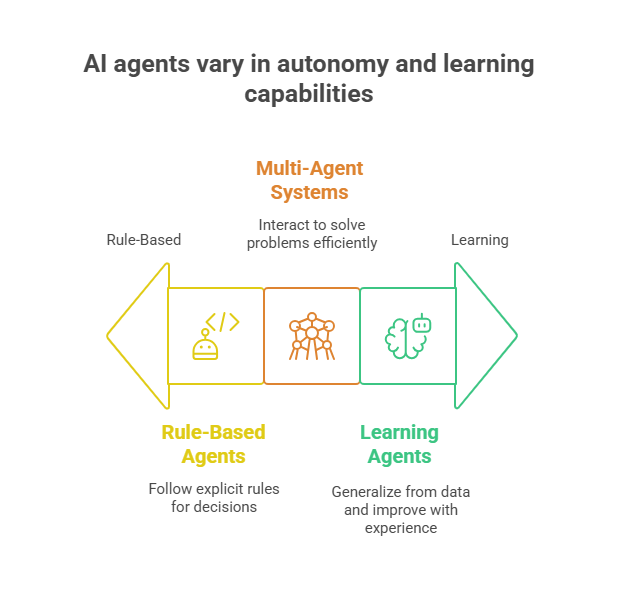
Quantum Algorithms Enhanced by AI Agents
Quantum algorithms hold the promise of solving certain problems exponentially faster than classical algorithms. However, designing, optimizing, and implementing these algorithms on real quantum hardware is a complex task. AI agents can play a pivotal role in enhancing quantum algorithms, making them more efficient, adaptable, and practical for real-world applications.
Optimizing Quantum Circuits
Quantum algorithms are expressed as sequences of quantum gates forming circuits. AI agents can analyze these circuits to identify redundancies, simplify gate sequences, and reduce overall circuit depth. This optimization is crucial because current quantum hardware is limited by qubit coherence times and gate fidelity. By minimizing circuit complexity, AI agents help improve the chances of successful computation.
Adaptive Algorithm Selection
Different quantum algorithms are suited for different problem types. AI agents can evaluate problem characteristics and select the most appropriate quantum algorithm dynamically. For example, an agent might choose between Grover’s search algorithm for unstructured search problems or the Quantum Approximate Optimization Algorithm (QAOA) for combinatorial optimization tasks, based on input data and performance criteria.
Parameter Tuning and Variational Algorithms
Many quantum algorithms, especially variational ones, rely on parameters that need to be tuned to achieve optimal results. AI agents equipped with machine learning techniques can automate this tuning process, exploring parameter spaces efficiently and avoiding local minima. This accelerates convergence and enhances algorithm performance.
Error Mitigation and Noise Reduction
Quantum hardware is prone to errors and noise, which can degrade algorithm accuracy. AI agents can learn error patterns and apply mitigation strategies, such as error-correcting codes or noise-aware circuit transformations. By adapting to hardware-specific noise profiles, AI agents improve the reliability of quantum computations.
Hybrid Quantum-Classical Algorithms
AI agents facilitate the integration of quantum algorithms with classical machine learning models. For instance, in quantum-enhanced reinforcement learning, AI agents can use quantum subroutines to accelerate policy evaluation or optimization steps. This synergy leverages the strengths of both paradigms for superior performance.
Automated Discovery of New Algorithms
Beyond optimizing existing algorithms, AI agents can assist in discovering novel quantum algorithms. Using techniques like genetic programming or reinforcement learning, agents can explore vast spaces of quantum circuits and identify innovative solutions to complex problems.
Summary
AI agents significantly enhance the development and deployment of quantum algorithms by optimizing circuits, selecting and tuning algorithms, mitigating errors, and even discovering new approaches. This collaboration between AI and quantum computing accelerates progress toward practical, high-impact quantum applications across industries.
Building Hybrid Quantum-AI Architectures
As quantum computing technology continues to advance, one of the most promising approaches to harnessing its power is through hybrid architectures that combine classical AI agents with quantum processors. These hybrid systems leverage the strengths of both paradigms—classical AI’s flexibility and learning capabilities, and quantum computing’s potential for exponential speedups in specific tasks.
Why Hybrid Architectures?
Current quantum hardware, known as Noisy Intermediate-Scale Quantum (NISQ) devices, is limited in qubit count and prone to errors. Purely quantum solutions are often impractical for complex, real-world problems. Hybrid architectures address these limitations by offloading parts of the computation to classical AI agents while delegating quantum processors to specialized subproblems where they excel.
Key Components of Hybrid Systems
Classical AI Agents: These agents handle data preprocessing, decision-making, and learning tasks. They orchestrate the overall workflow, determine when and how to invoke quantum computations, and interpret quantum results.
Quantum Processors: Quantum hardware executes quantum circuits designed for tasks like optimization, sampling, or simulation. These processors provide computational advantages for specific problem components.
Communication Layer: Efficient data exchange between classical and quantum components is critical. This layer manages the transfer of inputs, quantum circuit parameters, and measurement results, ensuring synchronization and minimizing latency.
Design Patterns for Hybrid Architectures
Variational Quantum Algorithms (VQAs): These algorithms use a classical optimizer (AI agent) to iteratively adjust parameters of a quantum circuit to minimize a cost function. Examples include the Variational Quantum Eigensolver (VQE) and Quantum Approximate Optimization Algorithm (QAOA).
Quantum-Assisted Machine Learning: Classical AI models incorporate quantum subroutines to enhance feature extraction, kernel evaluation, or sampling, improving performance on complex datasets.
Quantum-Inspired AI: Some hybrid systems use insights from quantum computing to design novel classical AI algorithms that mimic quantum behaviors, offering performance gains without requiring quantum hardware.
Challenges in Building Hybrid Systems
Error and Noise Management: Quantum hardware errors can propagate through the hybrid system, requiring robust error mitigation strategies.
Resource Scheduling: Efficiently allocating tasks between classical and quantum components to optimize throughput and minimize idle times.
Scalability: Designing architectures that can scale as quantum hardware improves and AI models grow in complexity.
Tools and Frameworks
Several platforms support hybrid quantum-AI development, including IBM’s Qiskit, Google’s Cirq, and Microsoft’s Azure Quantum. These frameworks provide APIs for integrating classical AI workflows with quantum circuit execution, simulation, and optimization.
Summary
Hybrid quantum-AI architectures represent a practical and powerful approach to leveraging quantum computing today. By combining the adaptability of AI agents with the unique capabilities of quantum processors, these systems open new avenues for solving complex problems across science, industry, and technology. As both fields evolve, hybrid architectures will play a central role in the future of computing.
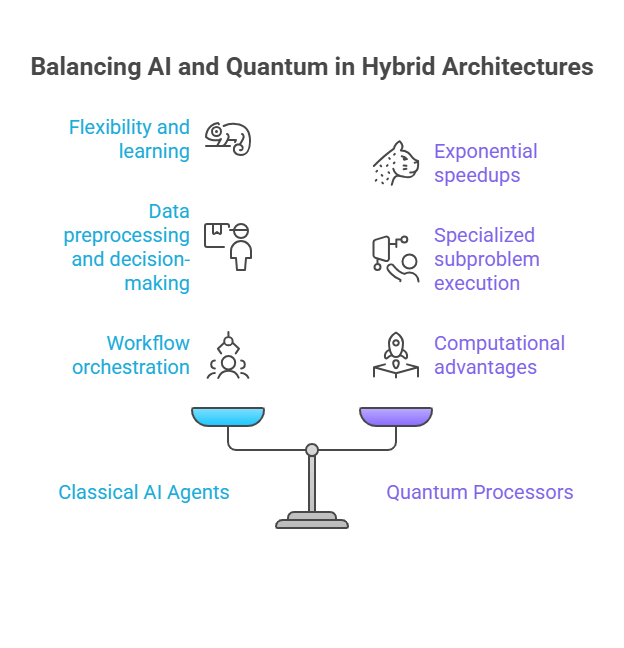
Tools and Frameworks for Quantum Programming with AI
The intersection of quantum computing and artificial intelligence (AI) has spurred the development of specialized tools and frameworks designed to facilitate hybrid quantum-AI programming. These platforms provide developers with the necessary abstractions, libraries, and environments to build, simulate, and deploy quantum algorithms enhanced by AI agents.
Quantum Programming Frameworks
Several mature frameworks enable quantum circuit design, simulation, and execution on real quantum hardware:
Qiskit (IBM Quantum): An open-source Python framework that offers tools for creating quantum circuits, running simulations, and accessing IBM’s quantum processors. Qiskit also supports integration with classical machine learning libraries, enabling hybrid workflows.
Cirq (Google): A Python library focused on designing, simulating, and running quantum circuits, particularly on Google’s quantum processors. Cirq emphasizes flexibility and low-level control, making it suitable for experimental quantum algorithms.
Q# (Microsoft Quantum Development Kit): A domain-specific language for quantum programming, integrated with Visual Studio and Azure Quantum. Q# supports hybrid quantum-classical workflows and provides libraries for quantum chemistry, optimization, and machine learning.
AI and Machine Learning Libraries
To build AI agents that interact with quantum components, developers often use popular machine learning frameworks:
TensorFlow and TensorFlow Quantum: TensorFlow Quantum extends TensorFlow to support quantum data and circuits, enabling the development of hybrid quantum-classical machine learning models.
PyTorch and PennyLane: PennyLane is a cross-platform library that integrates with PyTorch and TensorFlow, allowing automatic differentiation of quantum circuits and seamless hybrid model training.
Hybrid Development Platforms
Some platforms provide end-to-end environments for hybrid quantum-AI development:
Amazon Braket: A fully managed quantum computing service that offers access to multiple quantum hardware providers and supports hybrid workflows with classical compute resources.
Azure Quantum: Microsoft’s cloud platform combining quantum hardware access with AI and classical compute services, facilitating integrated development and deployment.
Simulation and Emulation Tools
Given the limited availability of quantum hardware, simulators play a crucial role:
Qiskit Aer: A high-performance simulator for Qiskit circuits, supporting noise modeling and advanced features.
QuTiP: A Python library for simulating open quantum systems, useful for research and algorithm development.
Integration and Orchestration Tools
To manage complex hybrid workflows, orchestration tools help coordinate AI agents and quantum tasks:
Kubeflow: An open-source platform for machine learning workflows that can be extended to include quantum tasks.
MLflow: A platform for managing the machine learning lifecycle, useful for tracking experiments involving quantum components.
Summary
The ecosystem of tools and frameworks for quantum programming with AI is rapidly expanding, offering developers powerful resources to explore hybrid computing. By leveraging these platforms, programmers can design sophisticated AI agents that optimize quantum algorithms, manage hybrid workflows, and accelerate innovation at the cutting edge of technology.
Real-World Applications: From Optimization to Cryptography
Quantum computing, enhanced by AI agents, is poised to revolutionize a variety of fields by solving complex problems more efficiently than classical methods. Below are some key application areas where hybrid quantum-AI approaches are making an impact.
Optimization Problems
Many industries face challenging optimization tasks, such as supply chain management, portfolio optimization, and scheduling. Quantum algorithms like the Quantum Approximate Optimization Algorithm (QAOA), combined with AI agents for parameter tuning and problem formulation, can find near-optimal solutions faster than classical heuristics.
Cryptography and Security
Quantum computing threatens traditional cryptographic schemes by efficiently factoring large numbers (Shor’s algorithm) and solving discrete logarithms. AI agents help design quantum-resistant cryptographic protocols and analyze security vulnerabilities, ensuring data protection in the quantum era.
Drug Discovery and Material Science
Simulating molecular interactions at the quantum level is computationally intensive. Quantum computers can model these systems more accurately, while AI agents assist in interpreting results and guiding experiments, accelerating the discovery of new drugs and materials.
Machine Learning and Data Analysis
Quantum-enhanced machine learning models can process high-dimensional data and complex feature spaces more effectively. AI agents orchestrate hybrid training processes, optimize quantum circuits, and interpret probabilistic outputs to improve model accuracy.
Python Example: Using Qiskit and AI for Optimization with QAOA
Below is a simplified example demonstrating how to set up a QAOA algorithm using Qiskit, with a basic AI-inspired parameter optimization loop.
python
from qiskit import Aer, execute
from qiskit.algorithms import QAOA
from qiskit.algorithms.optimizers import COBYLA
from qiskit_optimization import QuadraticProgram
from qiskit_optimization.algorithms import MinimumEigenOptimizer
import numpy as np
# Define a simple optimization problem: Maximize x0 + x1 subject to x0 + x1 <= 1
problem = QuadraticProgram()
problem.binary_var('x0')
problem.binary_var('x1')
problem.maximize(linear={'x0': 1, 'x1': 1})
problem.linear_constraint(linear={'x0': 1, 'x1': 1}, sense='LE', rhs=1, name='c1')
# Set up the quantum instance
quantum_instance = Aer.get_backend('aer_simulator_statevector')
# Define the QAOA optimizer with a classical optimizer (COBYLA)
qaoa = QAOA(optimizer=COBYLA(maxiter=100), reps=1, quantum_instance=quantum_instance)
# Create the MinimumEigenOptimizer using QAOA
optimizer = MinimumEigenOptimizer(qaoa)
# Solve the problem
result = optimizer.solve(problem)
print("Optimal solution:", result.x)
print("Optimal value:", result.fval)
# Simple AI-inspired parameter tuning loop (mock example)
def ai_parameter_tuning(qaoa, problem, iterations=5):
best_result = None
best_value = -np.inf
for i in range(iterations):
# Randomly adjust parameters (in real AI, use ML or Bayesian optimization)
qaoa.reps = np.random.randint(1, 4)
qaoa.optimizer.set_maxiter(np.random.randint(50, 150))
optimizer = MinimumEigenOptimizer(qaoa)
result = optimizer.solve(problem)
print(f"Iteration {i+1}: reps={qaoa.reps}, maxiter={qaoa.optimizer._maxiter}, value={result.fval}")
if result.fval > best_value:
best_value = result.fval
best_result = result
return best_result
# Run the AI-inspired tuning
best_result = ai_parameter_tuning(qaoa, problem)
print("Best solution after tuning:", best_result.x)
print("Best value after tuning:", best_result.fval)Challenges and Limitations of Quantum-AI Integration
The integration of AI agents with quantum computing holds immense promise, but it also presents a unique set of challenges and limitations. Understanding these obstacles is crucial for developers and researchers aiming to build effective hybrid quantum-AI systems.
Hardware Limitations
Current quantum computers, known as Noisy Intermediate-Scale Quantum (NISQ) devices, have limited qubit counts and are prone to errors and decoherence. These constraints limit the size and complexity of quantum algorithms that can be practically executed, affecting the performance of hybrid systems.
Error Rates and Noise
Quantum operations are susceptible to noise, which can introduce errors in computations. While AI agents can help with error mitigation strategies, the inherent instability of quantum hardware remains a significant hurdle for reliable quantum-AI applications.
Complexity of Hybrid Workflows
Coordinating classical AI processes with quantum computations requires sophisticated orchestration. Data must be efficiently transferred between classical and quantum components, and synchronization must be maintained despite differing execution speeds and error characteristics.
Algorithmic Challenges
Designing quantum algorithms that effectively complement AI workflows is non-trivial. Many quantum algorithms require careful parameter tuning and are sensitive to noise, making their integration with AI agents complex and resource-intensive.
Limited Tooling and Expertise
Quantum programming is still a nascent field with a steep learning curve. The scarcity of mature development tools and the need for specialized knowledge can slow adoption and experimentation with quantum-AI systems.
Scalability Concerns
Scaling hybrid quantum-AI architectures to handle large, real-world problems remains challenging. Both quantum hardware and AI models must evolve to support increased complexity and data volumes.
Ethical and Security Considerations
As with any advanced technology, integrating AI and quantum computing raises ethical questions around data privacy, security, and the potential for misuse. Ensuring responsible development and deployment is essential.
Summary
While the fusion of AI and quantum computing offers exciting opportunities, it is accompanied by significant technical and practical challenges. Addressing hardware limitations, managing complexity, and building expertise are key steps toward realizing the full potential of quantum-AI integration. Continued research, innovation, and collaboration will be vital in overcoming these barriers.
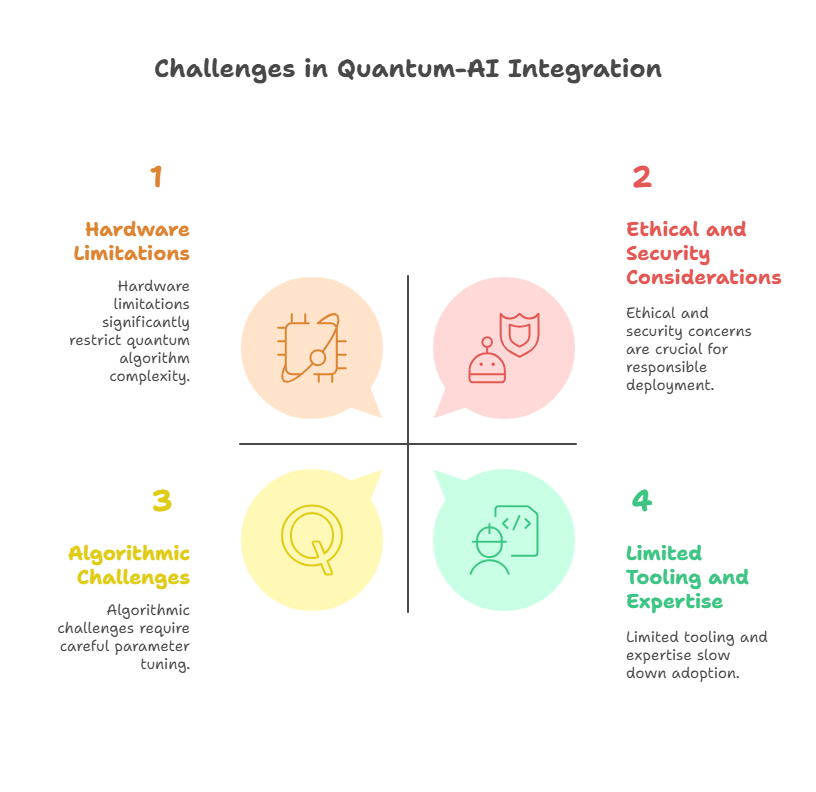
Best Practices for Developers Entering the Quantum-AI Space
Venturing into the intersection of quantum computing and artificial intelligence (AI) presents exciting opportunities but also unique challenges. For developers eager to explore this cutting-edge domain, adopting best practices can accelerate learning, improve project outcomes, and foster innovation.
1. Build a Strong Foundation in Both Fields
Quantum computing and AI each have their own complex theories and tools. Start by gaining solid knowledge in quantum mechanics basics, quantum algorithms, and classical AI concepts such as machine learning and reinforcement learning. Online courses, tutorials, and textbooks can provide structured learning paths.
2. Leverage Established Frameworks and Libraries
Use mature tools like Qiskit, Cirq, TensorFlow Quantum, and PennyLane to build hybrid applications. These frameworks offer abstractions that simplify quantum circuit design, simulation, and integration with AI models, reducing the barrier to entry.
3. Start Small with Simulations
Given the limited access to quantum hardware, begin by experimenting with quantum simulators. Simulators allow you to test algorithms and hybrid workflows without the noise and constraints of real devices, enabling rapid prototyping and debugging.
4. Embrace Hybrid Quantum-Classical Approaches
Focus on hybrid models where classical AI agents handle most processing and invoke quantum computations for specific subproblems. This approach is practical with current NISQ devices and leverages the strengths of both paradigms.
5. Collaborate and Engage with the Community
Join forums, attend workshops, and participate in hackathons focused on quantum computing and AI. Engaging with the community helps you stay updated on the latest developments, share knowledge, and find collaborators.
6. Prioritize Explainability and Transparency
When integrating AI agents with quantum components, ensure that decision-making processes are interpretable. This builds trust and facilitates debugging, especially in complex hybrid systems.
7. Manage Expectations and Iterate
Quantum-AI is an emerging field with many open questions. Set realistic goals, expect iterative development, and be prepared to learn from failures. Continuous experimentation is key to progress.
8. Stay Informed on Ethical and Security Implications
Understand the ethical considerations and potential security risks associated with quantum and AI technologies. Incorporate responsible practices from the outset to ensure safe and fair applications.
Summary
Entering the quantum-AI space requires a blend of curiosity, discipline, and collaboration. By building foundational knowledge, leveraging existing tools, starting with simulations, and engaging with the community, developers can navigate this frontier effectively. Embracing best practices will not only accelerate innovation but also help shape the responsible evolution of quantum-enhanced AI systems.
Future Trends: The Next Decade of Quantum-AI Collaboration
The collaboration between quantum computing and artificial intelligence (AI) is poised to accelerate rapidly over the next decade, unlocking new possibilities and transforming industries. As both fields mature, several key trends are expected to shape their integration and impact.
1. Enhanced Hybrid Algorithms
Hybrid quantum-classical algorithms will become more sophisticated, with AI agents playing a central role in optimizing quantum circuits, tuning parameters, and managing workflows. These algorithms will tackle increasingly complex problems in optimization, simulation, and machine learning.
2. Quantum Machine Learning Breakthroughs
Quantum machine learning (QML) will advance beyond theoretical models to practical applications. AI agents will leverage quantum-enhanced feature spaces and kernels to improve classification, clustering, and generative models, enabling breakthroughs in data analysis and pattern recognition.
3. Scalable Quantum Hardware
Improvements in qubit quality, error correction, and hardware scalability will expand the range of quantum computations possible. This will allow AI agents to utilize larger quantum processors, increasing the power and applicability of hybrid systems.
4. Automated Quantum Software Development
AI agents will increasingly automate the design, testing, and deployment of quantum software. This includes automated discovery of quantum algorithms, error mitigation strategies, and adaptive compilation techniques, reducing the expertise barrier for quantum programming.
5. Integration with Edge and Cloud Computing
Quantum-AI systems will integrate seamlessly with cloud and edge computing infrastructures, enabling distributed quantum processing and real-time AI-driven decision-making across diverse environments.
6. Ethical and Regulatory Frameworks
As quantum-AI technologies become more pervasive, ethical considerations and regulatory frameworks will evolve to address privacy, security, and fairness. AI agents will incorporate compliance checks and ethical guidelines into their workflows.
7. Cross-Disciplinary Collaboration
The next decade will see increased collaboration across disciplines—physics, computer science, mathematics, and domain-specific fields—fostering innovative quantum-AI applications in healthcare, finance, logistics, and beyond.
Summary
The future of quantum-AI collaboration is bright and dynamic. Advances in algorithms, hardware, automation, and integration will drive transformative applications, while ethical and regulatory considerations ensure responsible development. Developers and organizations that embrace these trends will be at the forefront of a new computing era, unlocking unprecedented capabilities and solving problems once thought intractable.
Conclusion: Unlocking New Horizons in Computing
The fusion of quantum computing and artificial intelligence (AI) represents one of the most promising frontiers in technology today. By combining the unique strengths of quantum mechanics with the adaptive intelligence of AI agents, we are poised to unlock new horizons in computing that can tackle problems beyond the reach of classical methods.
Throughout this exploration, we have seen how quantum programming introduces novel concepts such as superposition, entanglement, and probabilistic measurement, which challenge traditional programming paradigms. AI agents, with their autonomy, adaptability, and learning capabilities, serve as essential collaborators—optimizing quantum algorithms, managing hybrid workflows, and interpreting complex quantum data.
Real-world applications in optimization, cryptography, drug discovery, and machine learning demonstrate the transformative potential of hybrid quantum-AI systems. Yet, challenges remain, including hardware limitations, error management, and the complexity of integrating classical and quantum components.
Looking ahead, the next decade promises rapid advancements in quantum hardware, algorithmic innovation, and AI-driven automation. Developers who embrace best practices, leverage emerging tools, and engage with the growing community will be well-positioned to lead this revolution.
Ultimately, the convergence of quantum computing and AI is more than a technological evolution—it is a paradigm shift that will redefine how we compute, learn, and solve the world’s most complex problems. By unlocking these new horizons, we open the door to innovations that can profoundly impact science, industry, and society.
